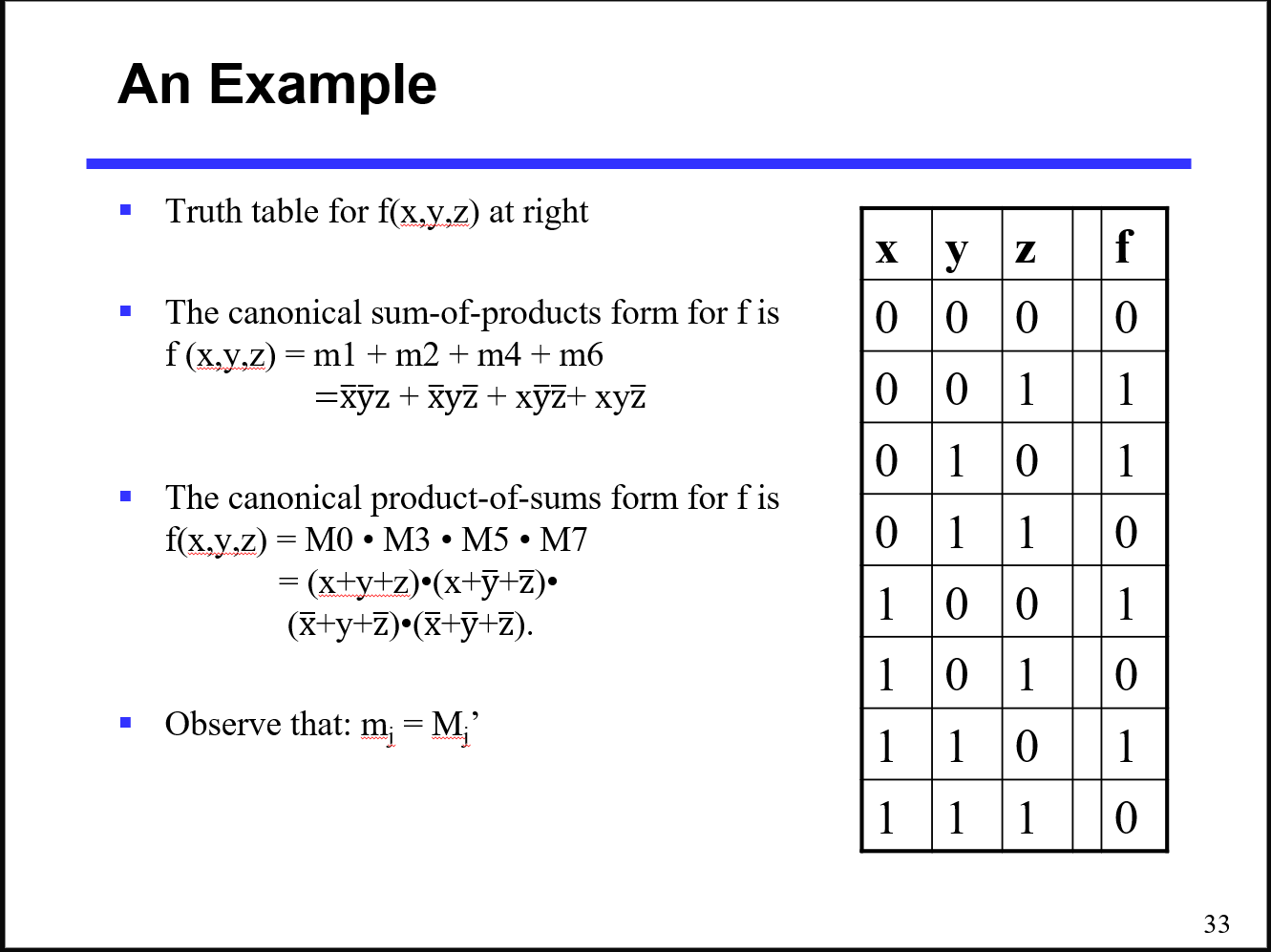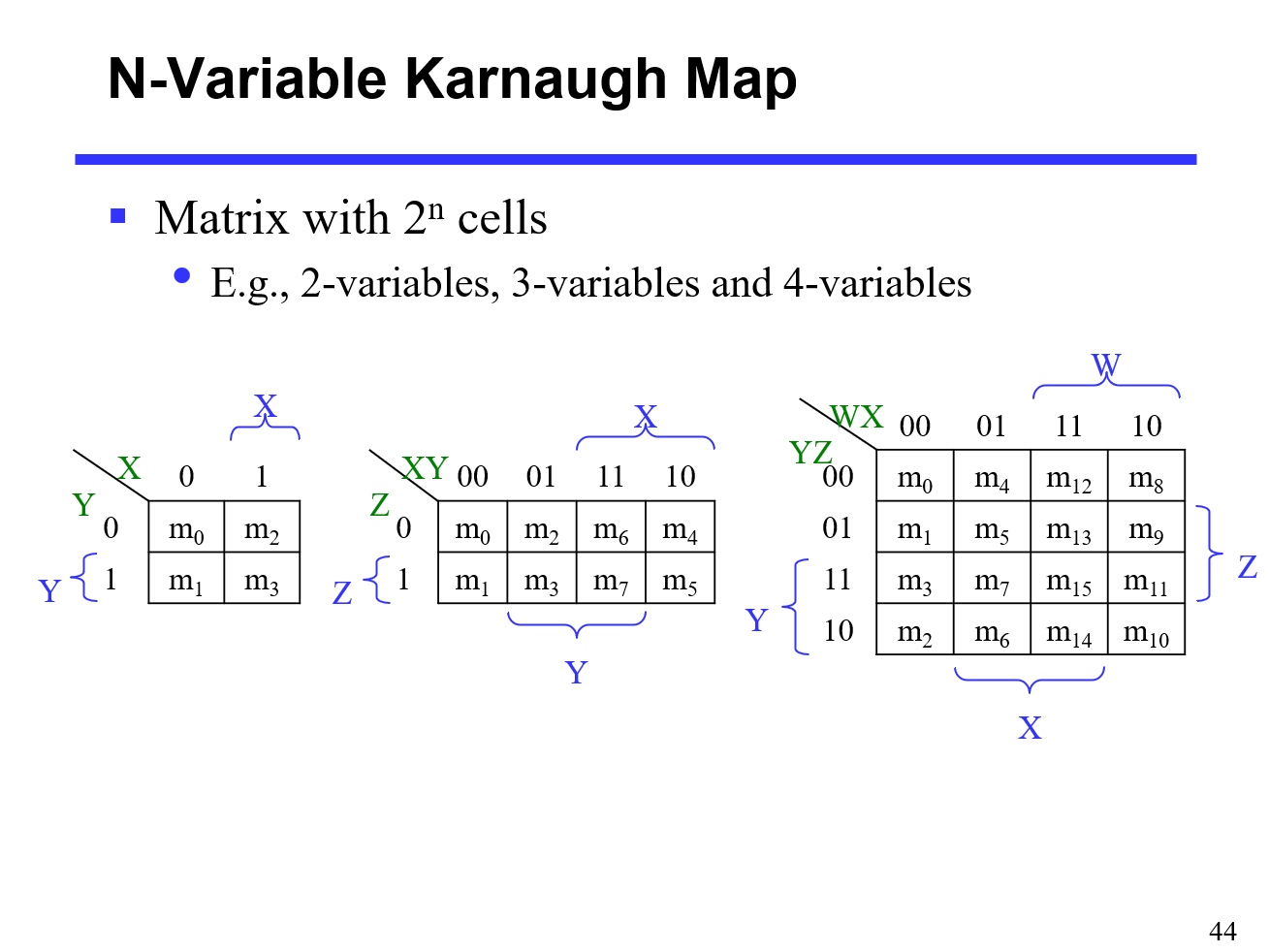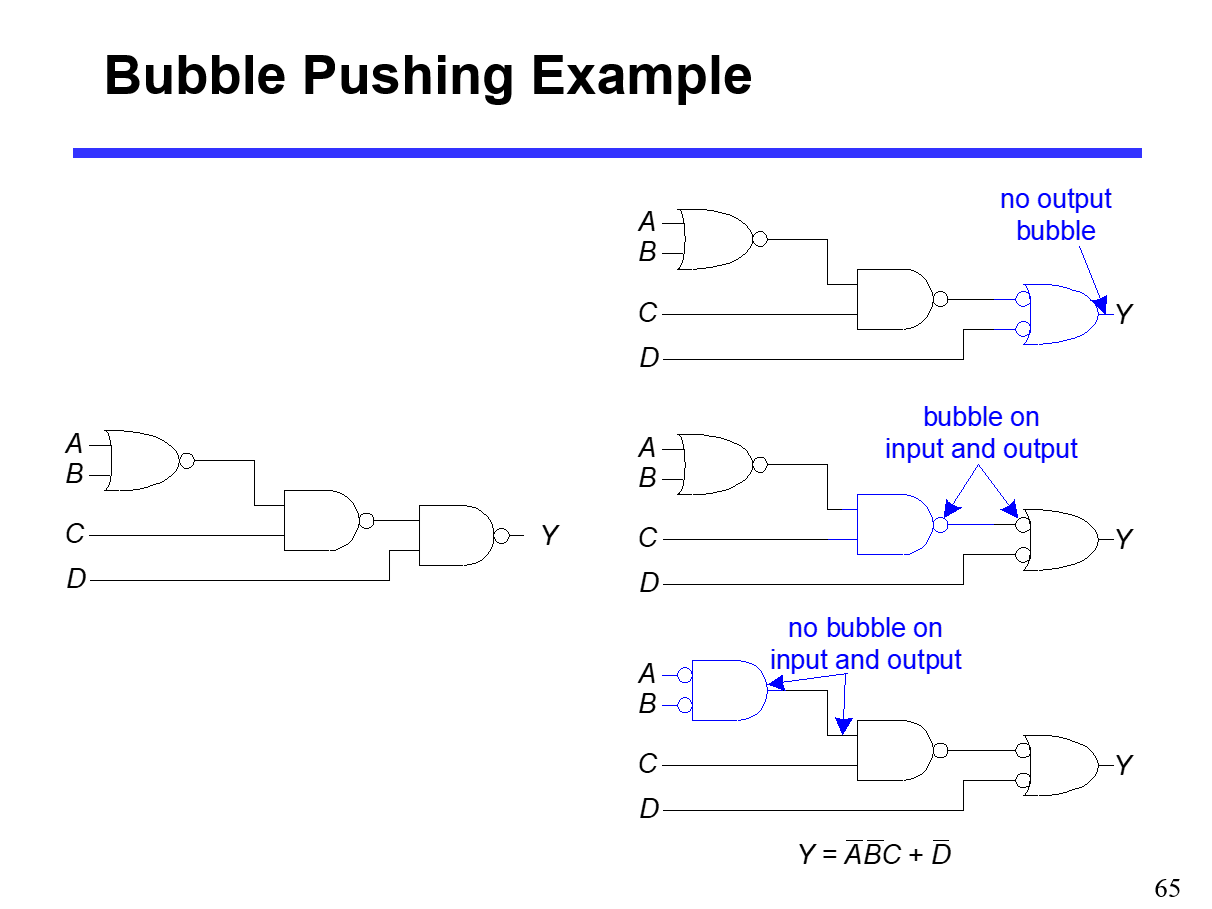Basic Infomation
Teachers: wht, ll
Lab Docs: 浙江大学24年春夏系统贯通一实验( ZJU intranet required )
Because of some reasons, Chapter 04 should change position with Chapter 05
Chapter 04
Binary Logical & Gates
Three basic logical operations
- AND
- OR
- NOT
How to Model Logic Functions?
- Using Switches
Logic Gates
- Perform logic functions
NOT, AND, OR, NAND, NOR, … - Single-input
NOT gate, buffer - Two-input
AND, OR, XOR, NAND, NOR, XNOR - Multiple-input
NOR3, AND4, …
NOT
BUF
AND (straight on the input edge)
OR (curly on the input edge)
XOR ( double curly edges )
NXOR
NAND
NOR
Transistors
Developing
Relays Vacuum Cude Transistor
- Tinier & Faster
- More Integration
- Less Consumption
Nvidia’s employees are all gone at p.m.
Integrated Circuit & Transistors
- Integrated Circuit IC
- Transisitor-Transisitor Logic TTL
- CMOS
Transistor Function
Implementation of Logic Gates with Transisitors
Chapter 06
TBD
Chapter 07
Boolean Algebra
Axioms
Theorems: 1~3 Variables
See also here
Theorems: n Variables
De Morgans’s Theorem
Shannon’s Theorem
Power of Duality
If a formula is valid, its dual version is valid as well.
Logical Functions
Representation of Logic Functions
- Truth Table
- Waveform
- Boolean Expressions
Coplementation of Functions
- Maintain the calculation order
Canonical & Standard Form
See also here
代表最小项 minterms 列表
代表最大项 maxterms 列表
一个n变量逻辑函数的最小项列表编号集合约最大项列表编号集合的并集为n位编号全集{0, 1, …, 2n-1},两者交集为空,是互补关系。
所以可以互相转换,只需对编码集合求补即可
作为一个例子, 我们可以把最小项理解为当二进制数 取 时, 取真;
同理, 最大项就是当二进制数 取 时, 取假;
Chapter 08
Simplification of Logic Functions
N-Variable Karnaugh Map
[Eg] 2-variables, 3-variables & 4 variables
每一行/列之间自由一个参数发生变化,01 不会和 10 相邻
化简卡诺图时,每个圈圈只会包括 种情况,目的是最小化参数量
K-Map Definations
- Implicant
- Prime implicant
- Essential prime implicant
no need to follow them strictly (scaping
Selection Rule Example with Don’t Cares
x could be regarded as both 0 & 1
x 是可 0 可 1的
Bubble Pushing
a funny method to simplify the logical graph
pushing bubbles (NOT GATE) back & forward


